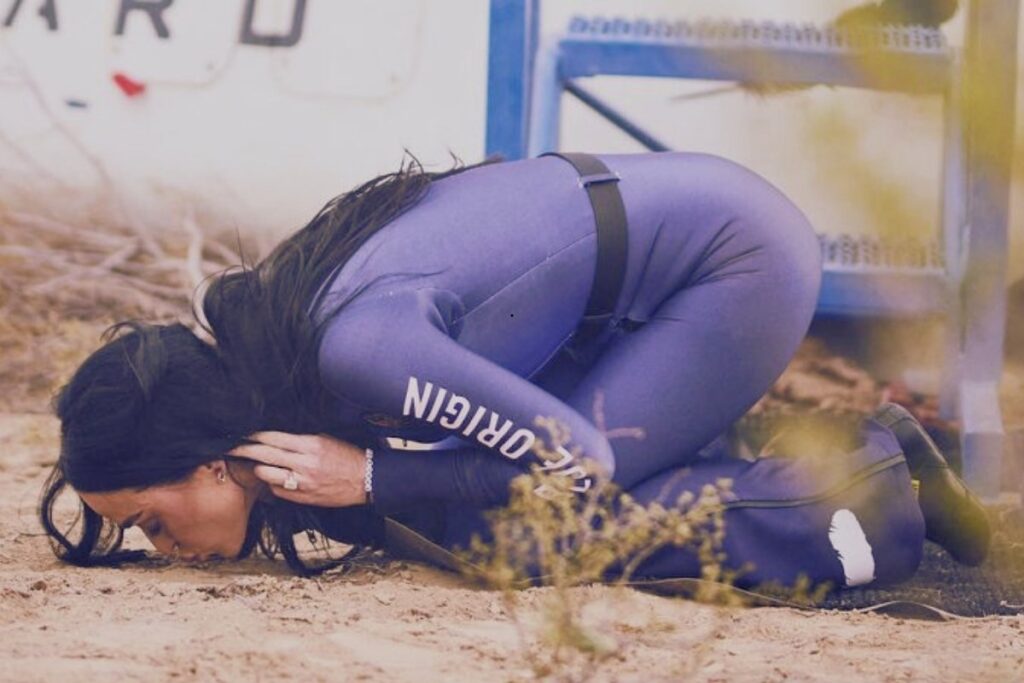On April 14, 2025, pop sensation Katy Perry went where few have gone before—66 miles (106 kilometers) above Earth, to be exact. She joined an elite group of civilians to experience the awe of space, soaring beyond the internationally recognized boundary known as the Kármán line aboard Blue Origin’s New Shepard rocket.
While the mission itself lasted just over 10 minutes, the significance of this flight—NS-31—was sky-high. Perry became part of the first all-female space crew since 1963, bringing with her a message of hope, unity, and appreciation for our planet. Her now-viral performance of “What a Wonderful World” during weightlessness turned the moment into something poetic, emotional, and unforgettable.
Here’s everything you need to know about how high Katy Perry flew, what she experienced, and why this mission was about more than just space travel.
How high did Blue Origin go?
Blue Origin’s New Shepard suborbital rocket lifted off from its launch site in West Texas, carrying six trailblazing women on a journey that would cross the edge of space.
Also Read
The rocket soared to an altitude of approximately 66 miles (106 kilometers)—4 miles past the Kármán line, the boundary recognized by the Fédération Aéronautique Internationale (FAI) as the starting point of space at 62 miles (100 km) above sea level.
This brief yet intense journey allowed the crew to experience several minutes of weightlessness, during which they unstrapped from their seats and floated inside the capsule, peering down at the stunning curve of Earth through large panoramic windows.
The entire flight, from liftoff to touchdown, lasted just over 10 minutes and 21 seconds, but the impact? Timeless.
Crossing the Kármán line means Perry and her crew officially became astronauts under many global definitions. This threshold is where Earth’s atmosphere thins enough for aeronautical flight to become impossible, and spaceflight begins.
While the flight didn’t reach orbital space like missions from SpaceX or NASA, it offered a full suborbital experience—including a few minutes of floating, a commanding view of Earth, and reentry forces upon descent.
For many, it’s the ultimate “overview effect”—a psychological shift that happens when viewing Earth from space, often leaving astronauts with a profound sense of global unity and environmental responsibility.
Joining Katy Perry on the historic NS-31 mission were five other accomplished women:
- Gayle King – Veteran broadcast journalist and co-host of CBS Mornings
- Lauren Sánchez – Philanthropist, journalist, and aerospace advocate
- Amanda Nguyen – Civil rights activist and Nobel Peace Prize nominee
- Aisha Bowe – Former NASA rocket scientist and tech entrepreneur
- Kerianne Flynn – Award-winning producer and women’s empowerment advocate
This was more than just a celebrity outing—it was a landmark mission for representation in space exploration. The last all-woman crewed mission took place over six decades ago, and NS-31 became a new symbol for what’s possible.
While floating in zero gravity, Katy Perry performed a soft, soulful rendition of “What a Wonderful World“—a moment that brought tears to the eyes of her crewmates and millions of fans watching the replays.
Perry later shared that she deliberately chose not to perform one of her own hits, like “Roar” or “Firework,” stating:
“It wasn’t about promoting my music—it was about honoring the view, the journey, and the beauty of the world we live in.”
She carried with her a daisy flower in tribute to her daughter, Daisy Dove Bloom, calling the flower a symbol of love, life, and the future. The touching tribute added emotional weight to her already powerful performance in space.
The Touchdown: Katy Perry Kissing Ground
After the brief yet life-changing trip, the capsule returned safely to Earth, landing softly in the Texas desert. Katy Perry and Gayle King were seen kissing the ground upon exit, a gesture of gratitude and reverence for the experience.
“You realize just how small we are and how big the universe is,” Perry said in a post-flight interview. “And how beautiful our planet is—this really is a wonderful world.”

The moment became one of the most talked-about cultural events of the year, bridging the worlds of science, art, and activism.
The mission was met with admiration and inspiration—but not without a few raised eyebrows. Critics of private space tourism questioned the cost of such ventures, especially amid global economic concerns. Some called it a publicity stunt, while others praised the visibility it gave to women in science and leadership.
For Katy Perry, though, the flight wasn’t about headlines or extravagance—it was about impact.
“Representation matters. Emotion matters. And seeing the world from up there? It changes you.”
Her decision to sing an Earth-loving anthem rather than self-promote helped shift the tone of the mission from spectacle to sincerity.
Katy Perry’s journey to 66 miles above Earth wasn’t just a personal milestone—it was a cultural moment. It reminded us of the power of visibility, the emotional weight of space travel, and the profound message of unity that comes from seeing Earth as one small, shared home.
With a flower for her daughter, a song for the planet, and a team of extraordinary women at her side, Perry didn’t just reach space—she helped ground us in the beauty and fragility of the world we all call home.
And in doing so, she proved once again: even the biggest stars can still look up.






